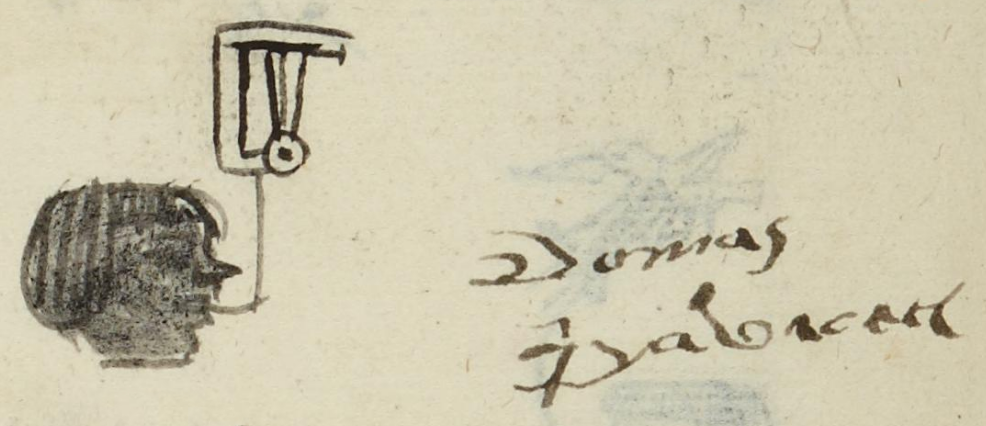Quiyahuacatl (MH634v)
This black-line drawing of the compound glyph for the personal name or affiliation, Quiyahuacatl ("Outdoor Person," or perhaps someone from Quiyahuac), is attested here as a man's name. It shows a profile view of a house or building (a very simplified calli), which serves as a silent locative and supports the person having an affiliation (-catl) with a place. The rain is shown as a triangular flow of water with a droplet or bead at the bottom. The glyph for rain seems actually to be a phonetic indicator for outdoors (quiyahuac) which is also supported by the placement of the raindrop at the entrance to the building.
Stephanie Wood
q~yavacatl
Quiyahuacatl
Stephanie Wood
1560
Jeff Haskett-Wood
rain, lluvia, casas, houses, building, edificios, temples, templos, entradas, afuera, nombres de hombres

quiyahui(tl), rain, https://nahuatl.wired-humanities.org/content/quiyahuitl
quiyahuac, outside or at the entrance, ttps://nahuatl.wired-humanities.org/content/quiyahuc
cal(li), house, https://nahuatl.wired-humanities.org/content/calli
-ca(tl), affiliation, https://nahuatl.wired-humanities.org/content/catl
Persona de la Entrada
Matrícula de Huexotzinco, folio 634v, World Digital Library, https://www.loc.gov/resource/gdcwdl.wdl_15282/?sp=351&st=image.
This manuscript is hosted by the Library of Congress and the World Digital Library; used here with the Creative Commons, “Attribution-NonCommercial-ShareAlike 3.0 License” (CC-BY-NC-SAq 3.0).






